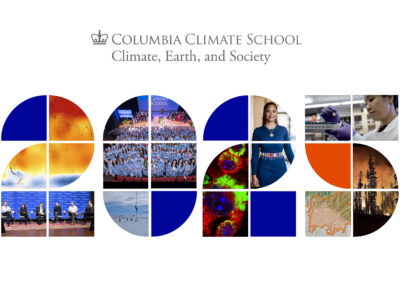Earth Institute scientists have begun research into the Gulf oil spill’s physical and ecological impacts, both on land at sea.
While much attention has focused on surface oil washing up along the shores of Gulf coast states, one cruise starting in mid-August will study the location and magnitude of subsurface oil plumes, and their effects on the marine ecosystem. The possibility of such plumes was initially brushed off by industry and government spokesmen, but their existence has since been confirmed by other researchers. Oceanographers Alexander Chekalyuk, Andrew Juhl, Ajit Subramaniam and Andreas Thurnherr of Lamont-Doherty Earth Observatory will help chart the plumes’ vertical and horizontal extent, and their effects on the mass, photosynthetic activity and population composition of phytoplankton, the tiny marine plants that form the base of the food chain. “There is increasing evidence that there is a substantial amount of oil subsurface, although we have no estimates of how much, its distribution, or its impact on the ecosystem,” says the group’s proposal to the National Science Foundation, which is funding the work. The scientist say that vast quantities of dispersants being used to break up the oil may also have impacts. “These changes may have significant and enduring effects on the microbial community and primary productivity of this region,” they say.

The team will use a variety of techniques, including sending out instrument-laden floats that autonomously dive and resurface, providing measures of water fluorescence, acoustics, oxygen content and other qualities. Data from the floats will be used to direct the ship toward any subsurface plumes for further investigation. The cruise will take place aboard the research vessel Oceanus Aug. 21-Sept. 16. It is being led by oceanographer Joseph Montoya of Georgia Institute of Technology. (Go to the cruise planning site.)
Some scientists speculate that the spill could even influence weather patterns on land. Under a separate NSF grant, Lamont-Doherty geochemist Wade McGillis is measuring the spill’s effects on atmosphere-ocean exchanges of water vapor, heat, carbon dioxide and methane. Prior studies done mostly in the lab have shown that substances floating on water surfaces sharply reduce normal exchanges of heat and gases–a phenomenon that could conceivably alter rainfall and wind patterns over land, and change ocean chemistry, according to McGillis’s proposal. “The widespread and persistent surface oil in the Gulf has produced a large natural system to explore the integrated effects of surfactants,” says McGillis, who has already started making measurements from small boats off Alabama’s Dauphin Island.
During July, the Earth Institute’s Center for Environmental Research and Conservation ran an ecology and conservation institute for middle-school teachers from New York, Connecticut and Texas, using the spill as a case study. Participants learned to put the spill and the response to it into broad contexts of biodiversity, water and energy resources, economics, politics and social dynamics. Among others, they heard from Matthew Palmer of Columbia’s Department of Ecology, Evolution and Environmental Biology, on the importance of marshes and wetlands in urban ecosystems.



